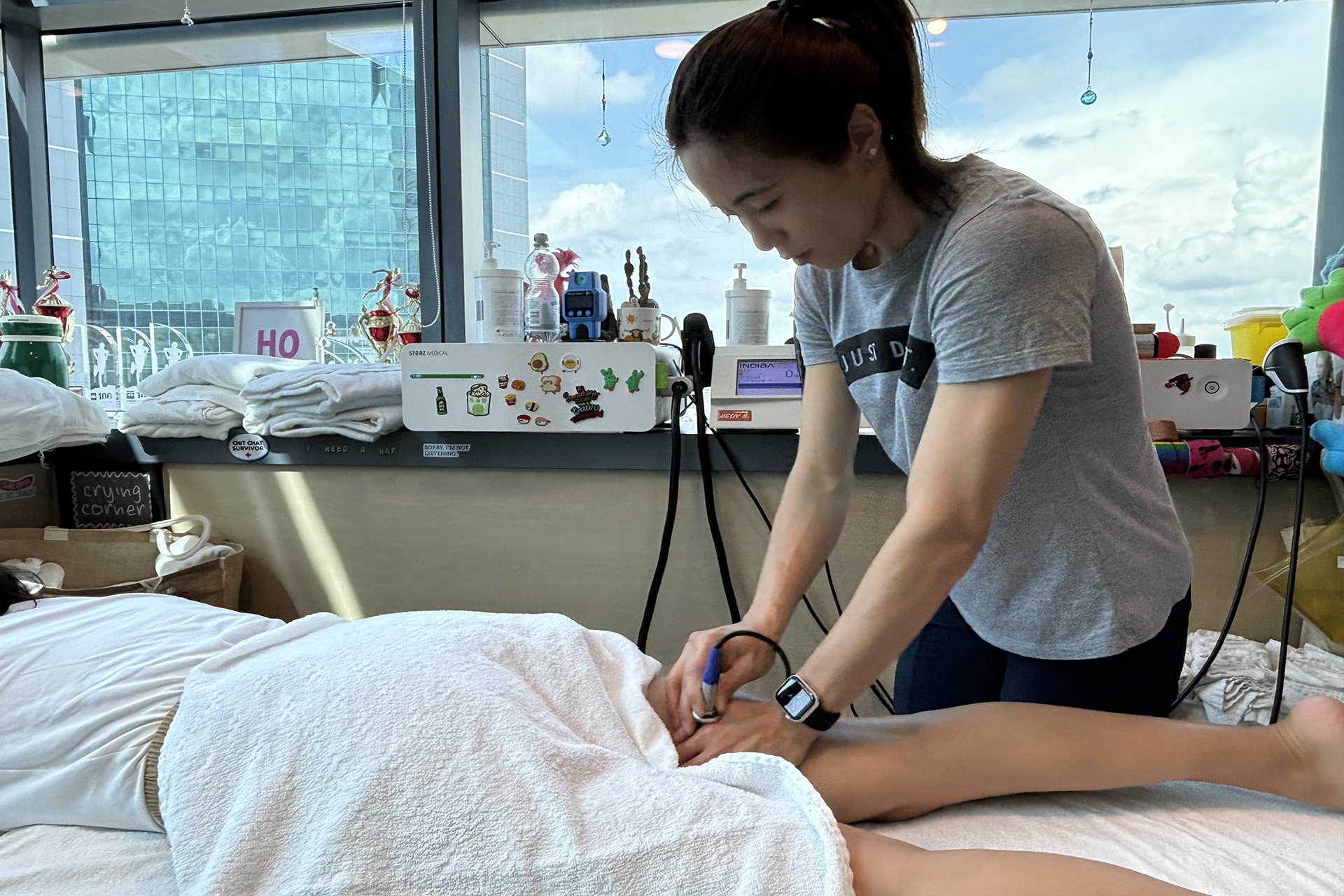Hamstring injuries are among the most common muscle injuries, particularly in sports that involve sprinting, jumping or sudden acceleration. Hamstring muscle injuries are a frequent issue in sports and physical activity, affecting athletes of all levels. Timely intervention and proper physiotherapy can make a significant difference in hamstring injury recovery and prevention, whether it involves a mild strain or a full-blown muscle tear.
Introduction to the Hamstring Muscle
The hamstring muscle group is a robust set of three muscles (the biceps femoris, semitendinosus, and semimembranosus) located at the back of the thigh. These muscles work together to control hip flexion and knee extension, making them essential for walking, running, jumping, and virtually all lower limb movements. The hamstring muscles are particularly susceptible to hamstring injuries as they are so involved in dynamic activities, especially those requiring sudden acceleration or changes in direction.
Whether it’s a mild hamstring strain from overstretching or a more severe hamstring injury involving a tear, understanding the anatomy and function of this muscle group is key to both prevention and effective hamstring injury treatment. Athletes and active individuals should pay special attention to the health of their hamstrings, as even mild hamstring strains can impact performance and increase the risk of more severe hamstring injuries if not properly managed.

Types of Hamstring Injury
Types and signs of a hamstring injury, which is a type of muscle strain, fall into three categories:
- Hamstring Strain Injury: The most common type of hamstring injury is a hamstring muscle strain, which occurs when the muscle fibers are stretched too far due to sudden movements or muscle overload, particularly during eccentric contractions. This often happens to sprinters or athletes making quick directional changes.
- Partial Tear: This is a more severe injury where some muscle fibers are torn, resulting in pain, swelling and limited mobility.
- Complete Rupture: This is the most severe type of hamstring injury, where the muscle is completely torn from its attachment point. In many cases, a complete rupture may involve the hamstring tendon being torn away from the bone (tendon avulsion), which often requires surgical repair to reattach the tendon and will also require a longer rehabilitation process.
Knowing the severity of the injury is important in determining the appropriate treatment approach and the hamstring injury recovery time.
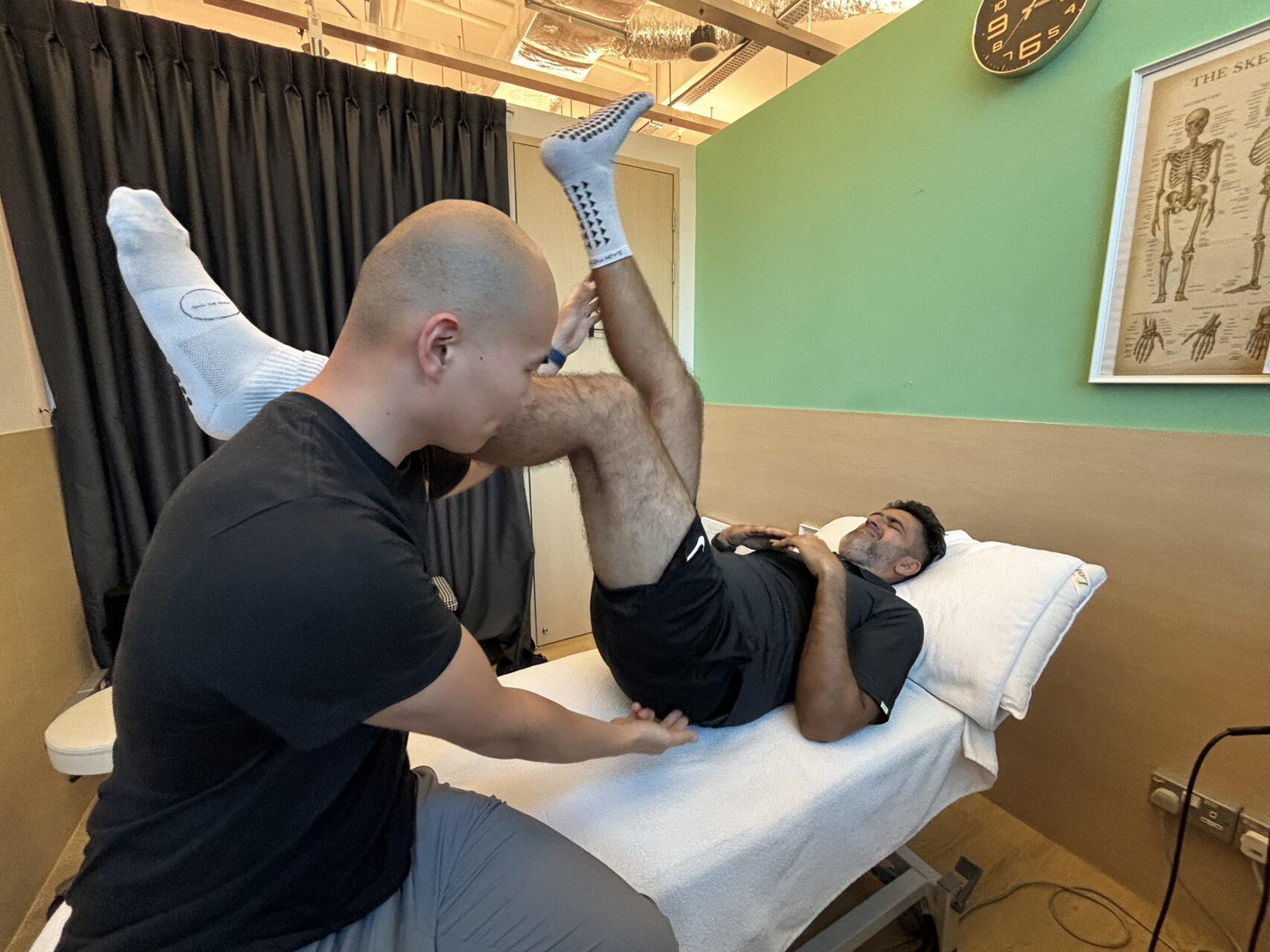
Common Causes of Hamstring Injuries
A hamstring injury occurs when the muscle is stretched beyond its capacity during rapid acceleration, deceleration, jumping, kicking, or sudden directional changes, especially during eccentric contractions. Several factors contribute to hamstring injuries, including:
Previous Injury: A repeated hamstring injury is more likely in individuals with prior hamstring strains who do not complete proper rehabilitation after a hamstring injury.
Inadequate Warm-Up: Failing to warm up properly before physical activity increases the risk of muscle strain and increases the likelihood of a hamstring injury.
Muscle Imbalance: Weak glutes or quadriceps can force the hamstrings to overcompensate excessively, contributing to injury.
Poor Flexibility: Tight hamstrings and muscles reduce range of motion, making the muscles more prone to injury.
Fatigue: Tired muscles are less able to absorb force, which increases the risk of strains or tears.
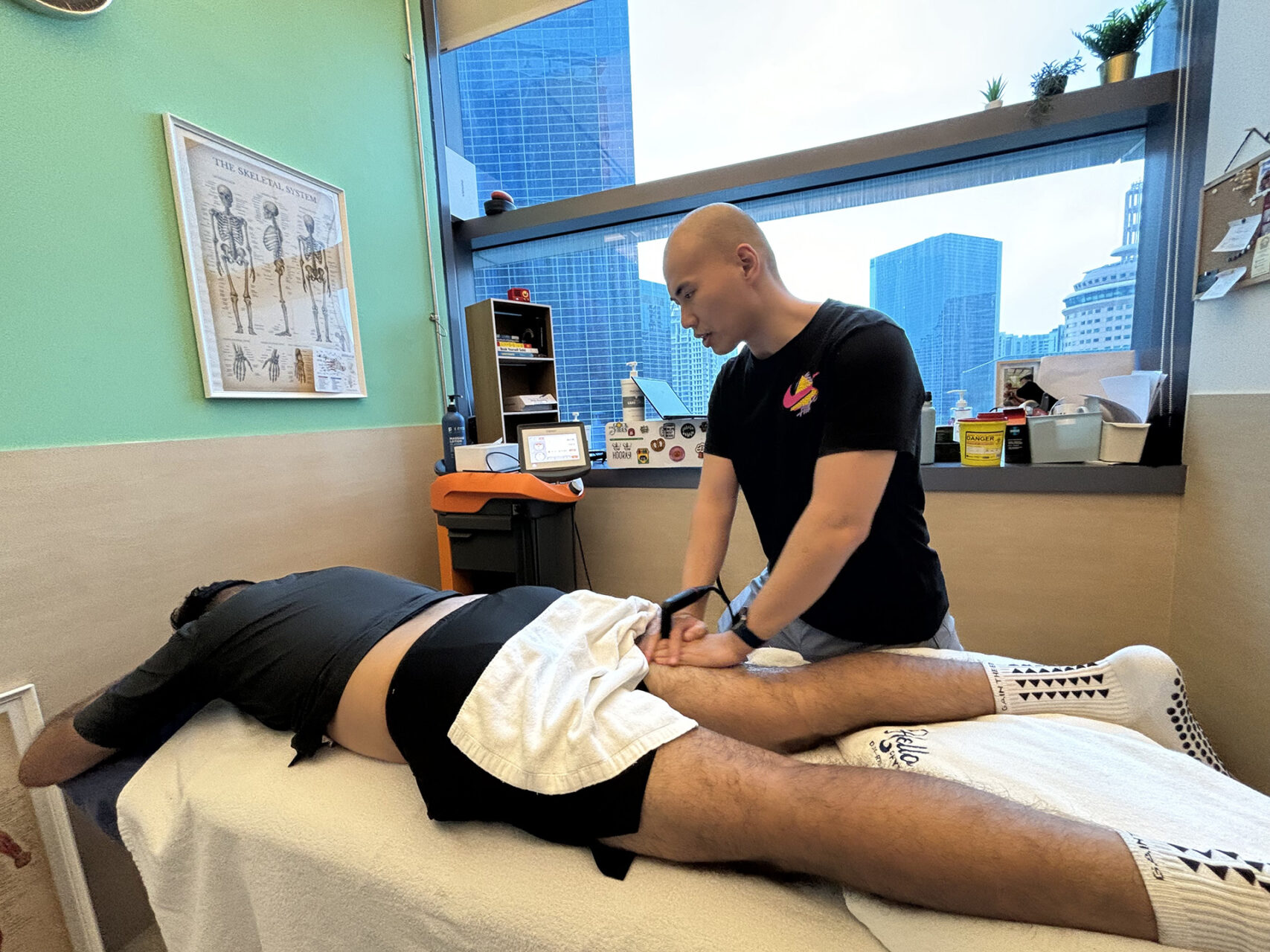
Hamstring Injury Symptoms
Hamstring injury symptoms often include a sudden sharp pain in the back of the thigh, swelling, bruising, muscle weakness, and a reduced range of motion.
A pulled hamstring, or hamstring strain, typically presents with a sudden, sharp pain in the back of the thigh, often accompanied by a “popping” sensation during activity. This pain can range from mild discomfort to severe pain that makes it difficult to walk or straighten the leg. Other common symptoms include muscle weakness, swelling, bruising, and a noticeable decrease in range of motion in the affected hamstring. In more severe injuries, such as a complete tear, you may be unable to bear weight on the injured leg or notice a visible deformity.
Diagnosing a pulled hamstring starts with a thorough physical examination, where a physical therapist or orthopedic specialist will assess the injured area for tenderness, swelling and muscle weakness. They’ll also review your medical history, looking for risk factors like muscle imbalance or a previous hamstring injury, which can increase the likelihood of recurrence.
Imaging tests, such as an MRI or ultrasound, may be used to determine the extent of the injury and to rule out other causes of pain in the back of the thigh. Accurate diagnosis is crucial, as it guides the development of a tailored treatment plan that may include physical therapy, targeted strengthening exercises, and strategies for injury prevention to support a safe and effective recovery.
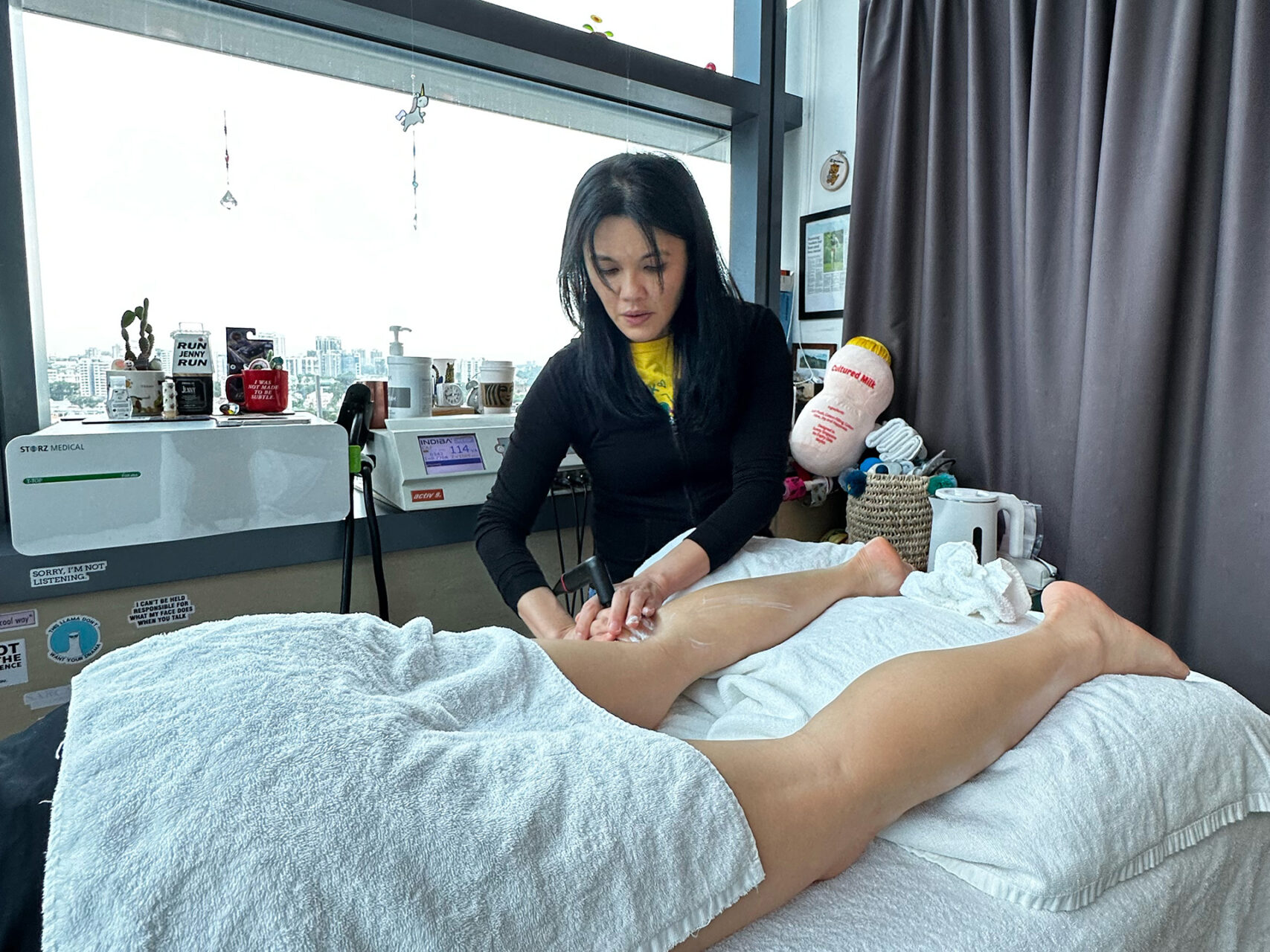
Hamstring Injury Treatments and Physiotherapy
Rehabilitation and hamstring injury treatment involve a structured physiotherapy approach that includes pain management, mobility restoration, strengthening exercises, and injury prevention. A physical therapy program is a crucial component of rehabilitation for hamstring muscle injuries, offering targeted exercises and stretches to restore function and prevent reinjury. A knee splint or a knee brace may be recommended to immobilize the leg and promote healing during the initial treatment phase.
Diagnosing a hamstring injury involves a physical examination and a review of your medical history. A physiotherapist will ask questions about the injury, how it occurred, and the level of pain being experienced. A physical examination will assess the affected leg’s range of motion, strength and tenderness.
Imaging tests such as MRIs or ultrasounds may be ordered to confirm a hamstring injury diagnosis and assess the extent of muscle or tendon damage. These imaging tests can help evaluate injuries to the hamstring tendon and the knee joint, especially in more severe hamstring muscle injuries. X-rays are sometimes used to rule out associated bone injuries, such as avulsion fractures.
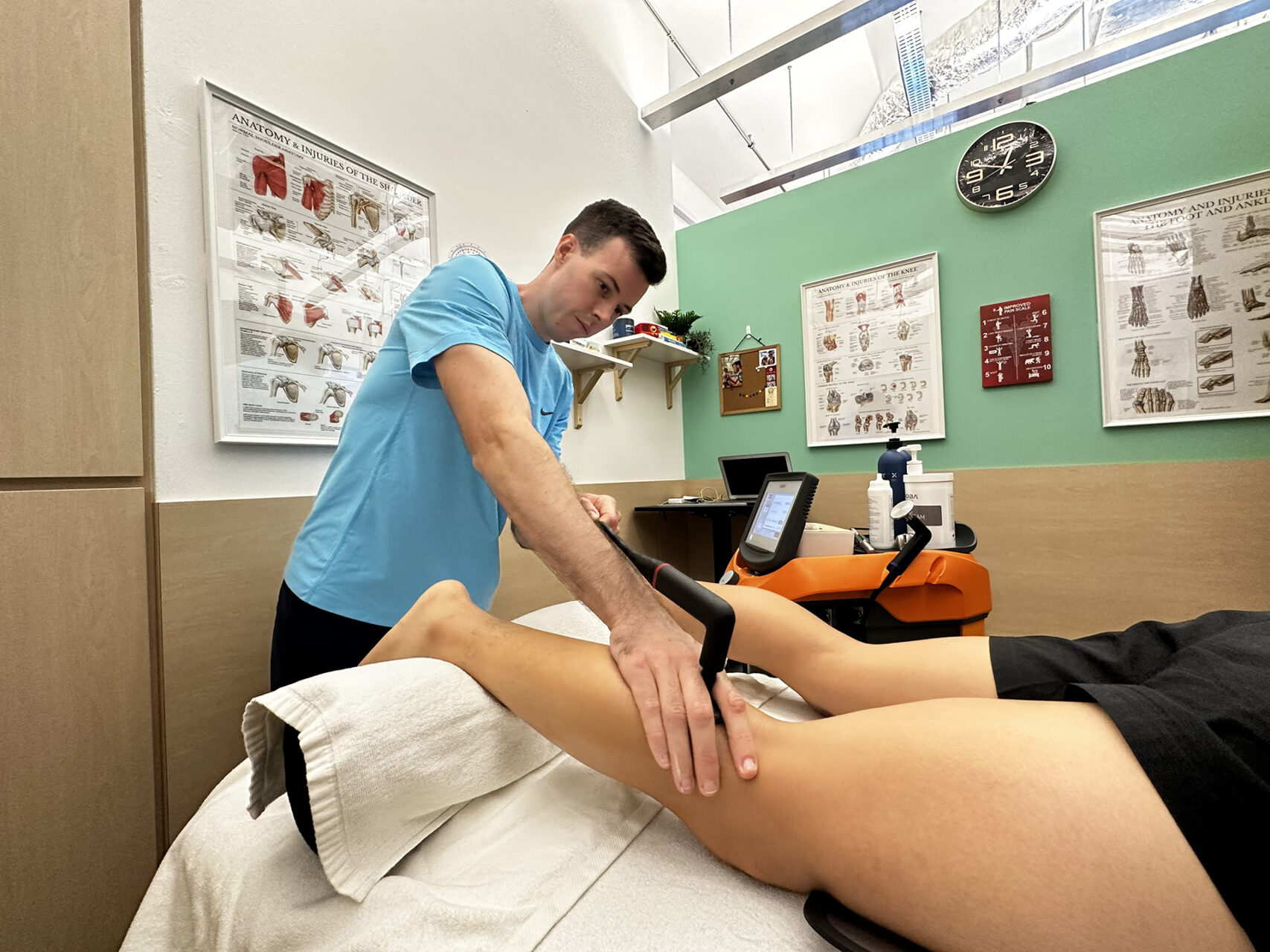
Acute Phase: Rest and Initial Care for Hamstring Muscle Strain
One of the most common questions after a hamstring injury is, “How long should you rest a hamstring injury?”. The first 48 hours are crucial in assessing and managing the injured leg to minimize damage. The PEACE and LOVE protocol can help manage inflammation and promote healing during this period.
PEACE (Protection, Elevation, Avoiding anti-inflammatories, Compression and Education) focuses on immediate care, reducing swelling and preventing further damage in the short term. LOVE (Load, Optimism, Vascularization and Exercise) guides long-term recovery by allowing gradual movement, maintaining a positive mindset, improving circulation and incorporating progressive exercise to restore strength and mobility. However, prolonged rest without activity can delay hamstring injury recovery, so early physiotherapy intervention is essential.
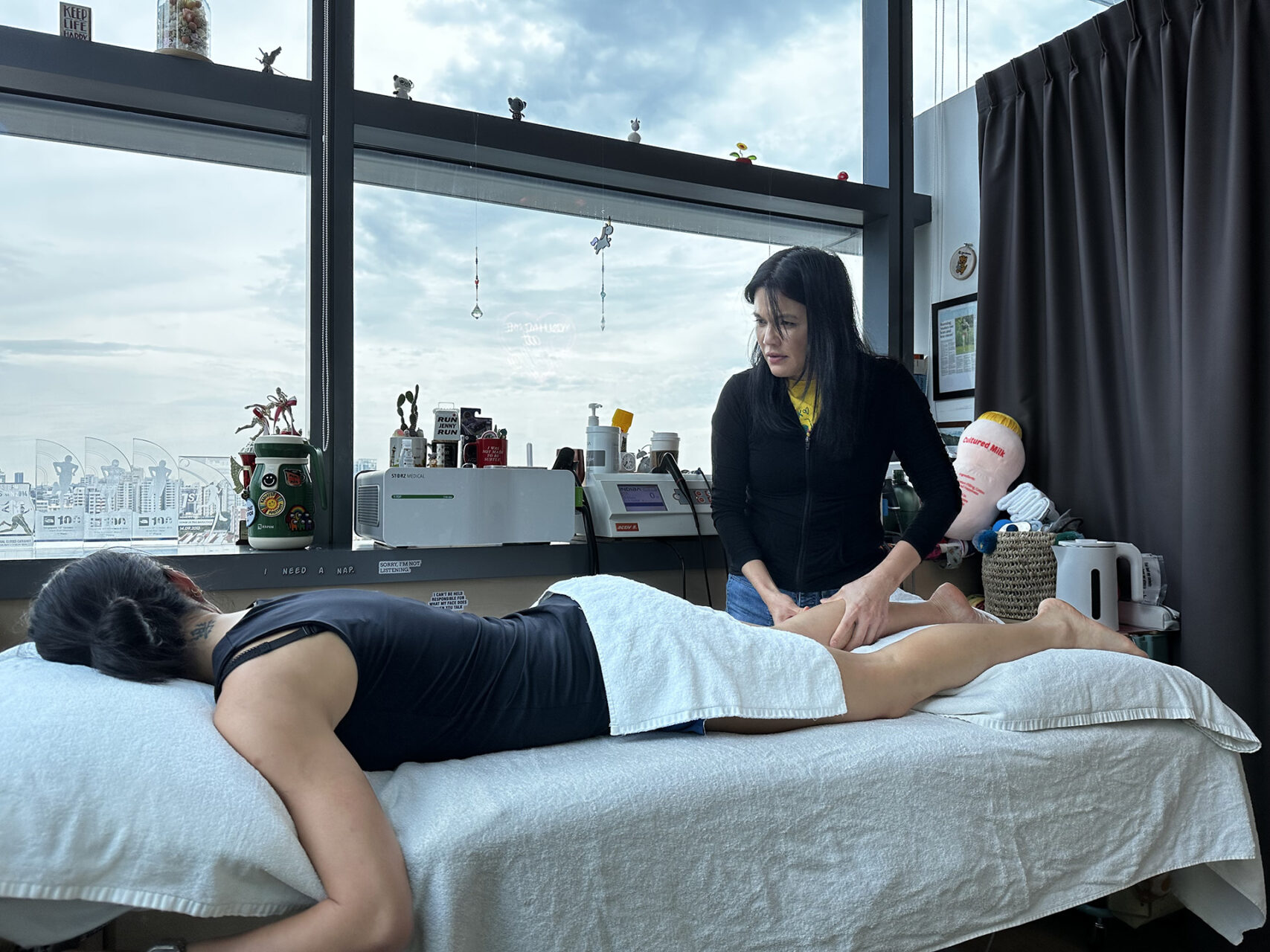
Early Rehabilitation To Restore Mobility and Reduce Pain
Physiotherapists employ various techniques to expedite hamstring injury time to heal and safely reintroduce movement. How to treat a hamstring injury includes:
Manual Therapy
Gentle stretches and joint mobilization are key in maintaining flexibility without aggravating the injury. Gentle stretches are an important part of early rehabilitation to restore flexibility once initial pain and swelling have subsided. When performing these stretches, it is crucial to keep the leg straight to maximize effectiveness and prevent reinjury. These techniques increase circulation, break down adhesions and improve joint mobility, allowing the hamstring injury time to heal with optimal function and without excessive stiffness. Targeted movements, such as hip extension exercises, are also introduced to help restore strength and stability in the hamstrings and surrounding hip muscles during the healing process.
INDIBA® Activ
INDIBA utilises radiofrequency energy to penetrate deeply into soft tissues, enhancing cellular metabolism and stimulating natural repair processes. This technology enhances blood circulation by inducing vasodilation, which facilitates the delivery of oxygen and essential nutrients to the injured hamstring. It also reduces inflammation by modulating inflammatory mediators, which limits excessive swelling that can hinder healing.
Shockwave Therapy
Shockwave Therapy is excellent for chronic hamstring injuries as the high-energy acoustic waves stimulate tissue regeneration at the cellular level. This process increases collagen production and creates more substantial and resilient muscle fibers. Shockwave Therapy also breaks down fibrotic scar tissue that restricts movement and causes recurrent injuries. By increasing local blood flow and reducing neuromuscular tension, this therapy enhances flexibility and function, thereby accelerating hamstring injury recovery time by improving metabolic activity in the damaged tissue.
MAGNETOLITH EMTT
Extracorporeal Magnetotransduction Therapy (EMTT) is a non-invasive treatment that uses high-energy electromagnetic fields to stimulate cellular activity and promote tissue healing. This benefits hamstring injuries by increasing blood circulation, reducing inflammation and promoting collagen regeneration. By targeting deep tissues without direct physical contact, MAGNETOLITH EMTT repairs muscle fibers, relieves pain and improves flexibility, making it a great addition to any hamstring injury rehabilitation plan.
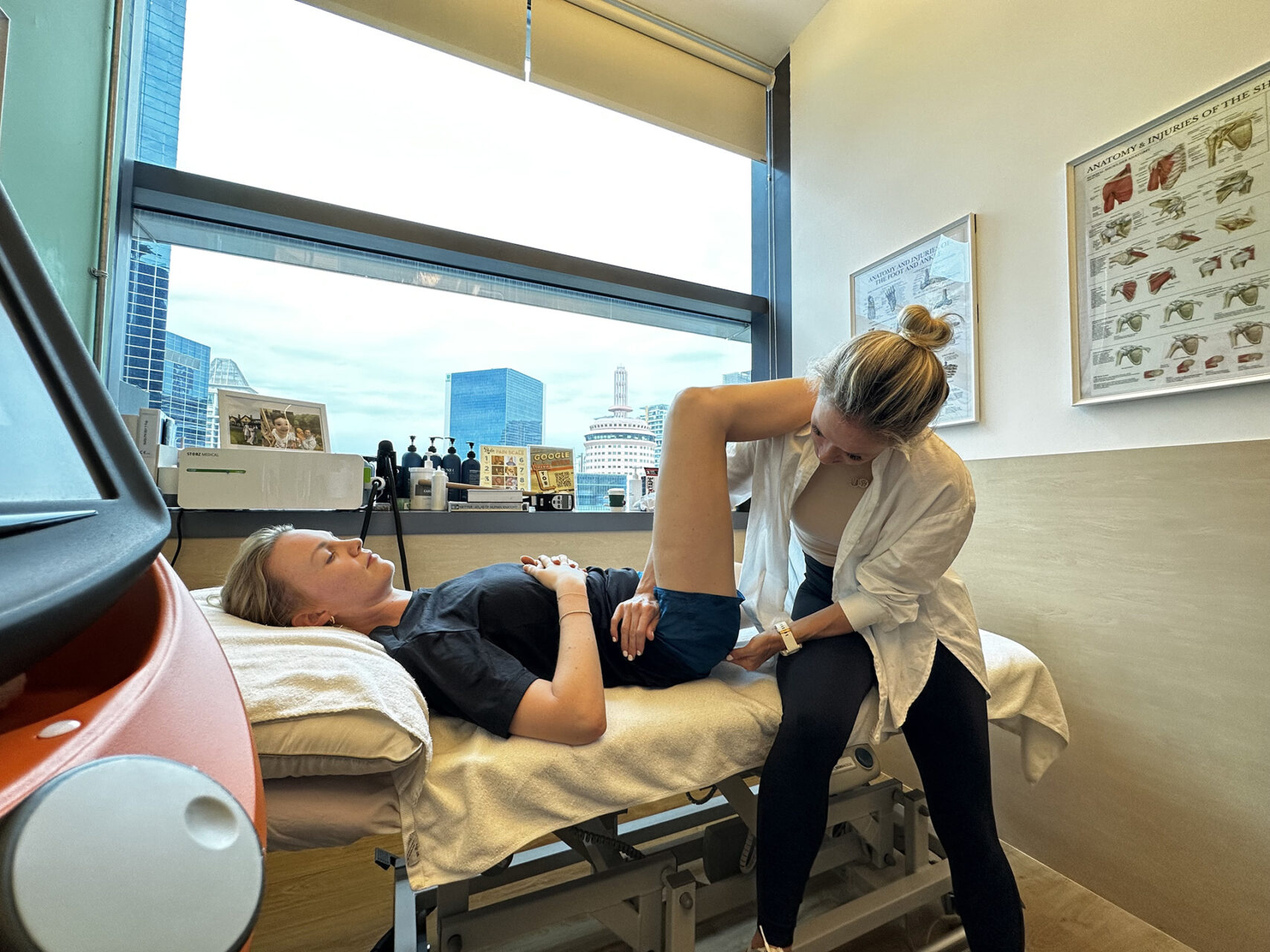
Surgical Intervention for Severe Muscle Injuries
While most hamstring injuries can be managed with conservative treatments, surgical intervention may be necessary for severe hamstring injuries, such as a complete tear of the hamstring muscle or tendon. In these cases, the goal of surgery is to repair or reattach the damaged tissue, restore normal function, and minimize the risk of long-term complications. Orthopedic surgeons may perform open or minimally invasive procedures, depending on the location and extent of the injury.
After surgery, a structured rehabilitation program is essential to regain range of motion and rebuild strength in the affected hamstring. Physical therapy plays a central role in this process, guiding patients through gentle stretching, progressive strengthening exercises, and functional training to ensure a safe return to activity. Close collaboration with your healthcare team, including orthopedic surgeons and physical therapists, is key to achieving the best possible outcome and reducing the risk of future hamstring injuries.
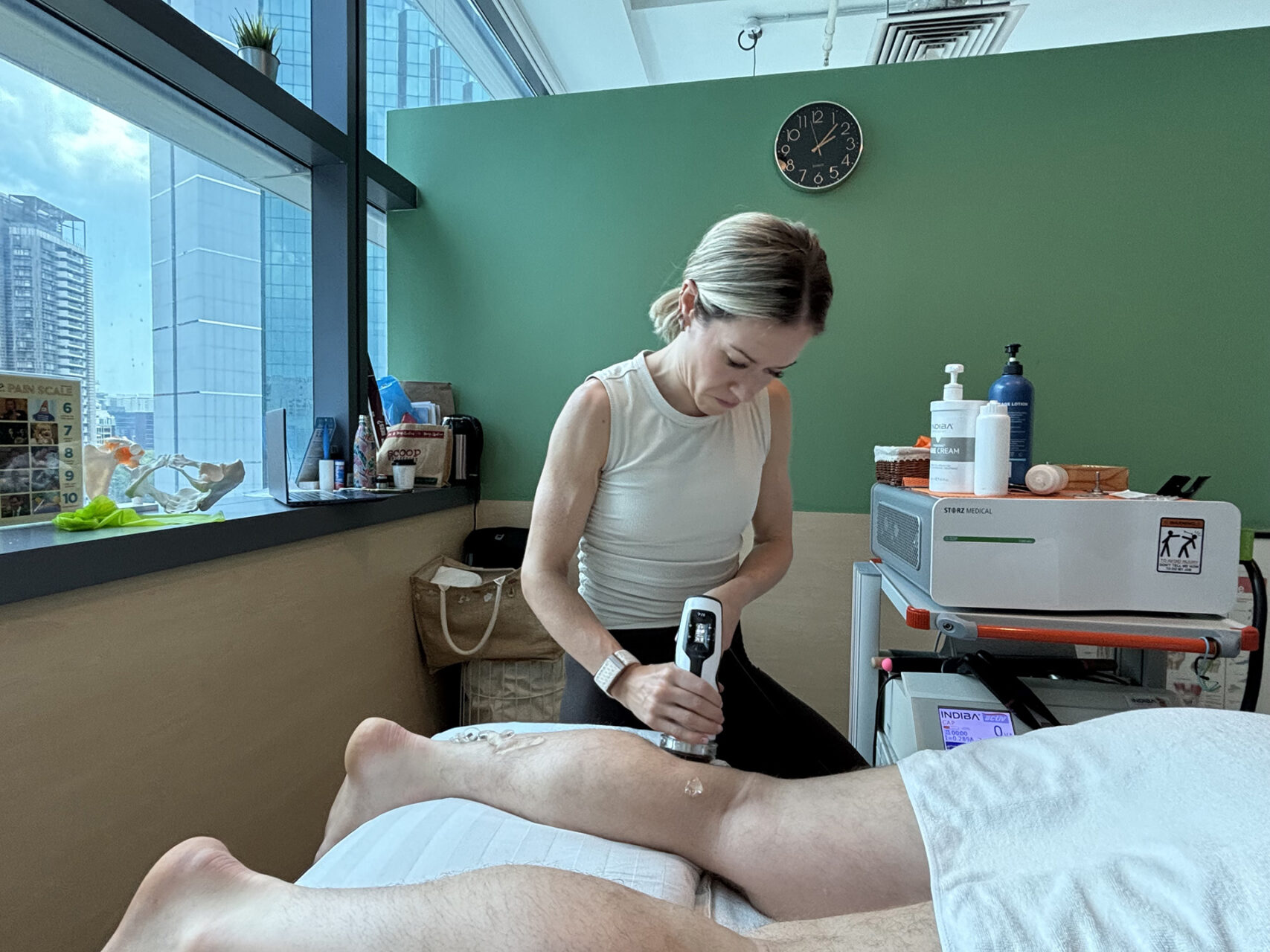
Hamstring Injury Exercises, Strengthening and Functional Rehabilitation
The most effective exercise for hamstring injury rehabilitation is eccentric loading, which strengthens the hamstring muscles while also lengthening them. Strengthening exercises are crucial in hamstring injury recovery. Physiotherapists usually prescribe the following exercises:
- Nordic Hamstring Curls: Kneel on a mat and have your ankles secured by a partner or other equipment. Slowly lower your torso forward while keeping your back straight, using your hamstrings to control the descent. This exercise helps build resilience and prevent recurring hamstring injuries.
- Bridge Exercises: Lie on your back with your knees bent and feet flat on the ground. Press through your heels to lift your hips off the floor, engaging your hamstrings and glutes. Hold for a few seconds before lowering back down. This exercise strengthens the posterior chain and promotes pelvic stability.
- Eccentric Hamstring Strengthening: Stand upright and place one foot on a low step. Slowly lower the standing leg into a single-leg deadlift position, controlling the movement to engage the hamstrings. This gradual loading prevents re-injury and improves functional strength.
Clinical Pilates is also beneficial, as it can improve core strength and promote balanced movement patterns, reducing strain on the hamstrings.
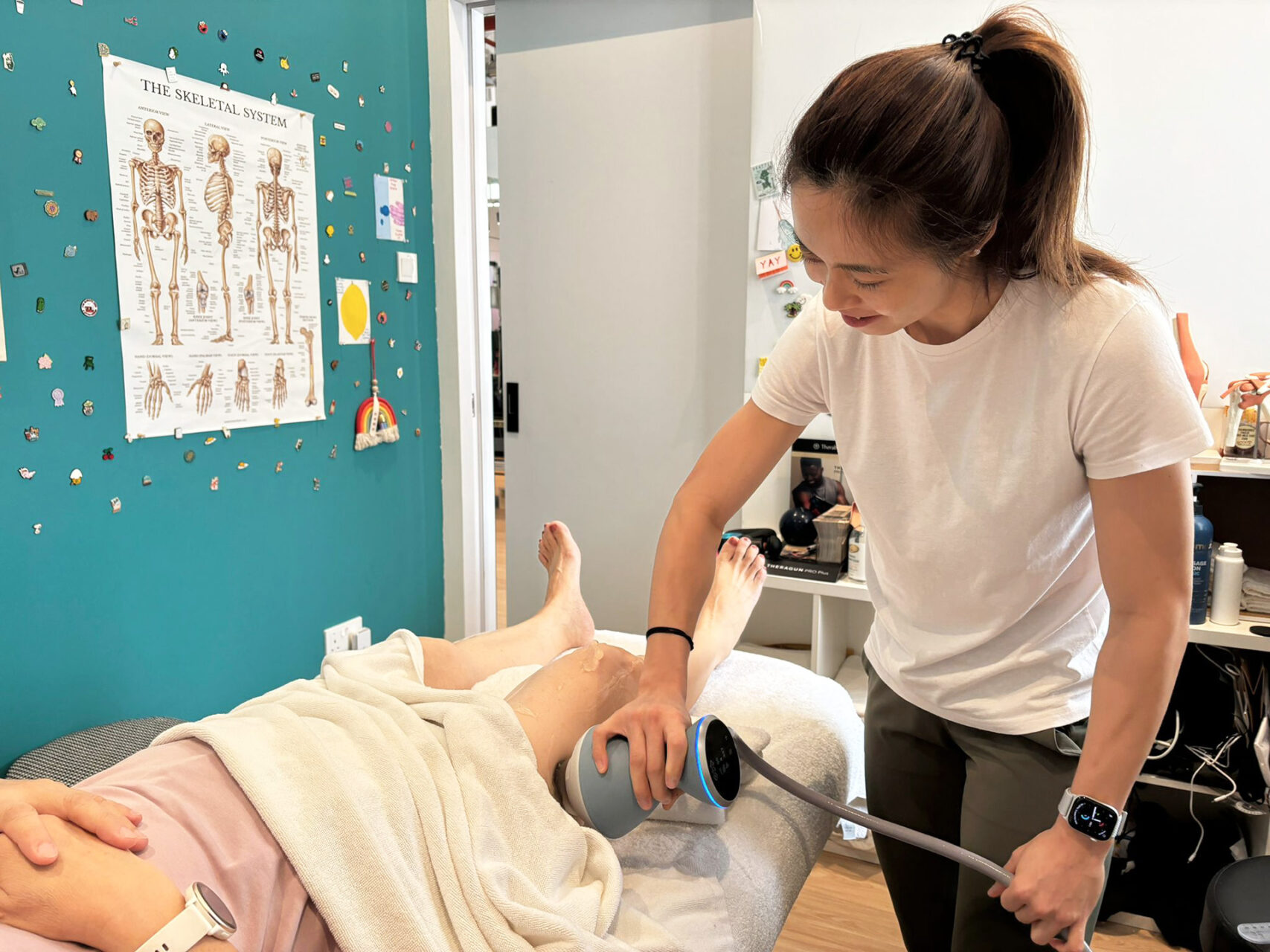
Returning to Activity and Injury Prevention
One of the biggest concerns for athletes and active individuals is how long to wait before resuming full activity. There’s no single answer, as recovery time varies depending on the severity of the hamstring injury:
- Mild Hamstring Strains: 2-3 weeks with proper rehab
- Moderate Tears: 4-8 weeks of structured physiotherapy
- Severe Tears or Surgery Recovery: 3-6 months to full activity
A physiotherapist can significantly aid the recovery time by assessing movement patterns, providing biomechanical corrections, and implementing injury prevention strategies. These may include dynamic stretching routines to improve flexibility and maintain range of motion. Strength training programs may be incorporated to balance lower limb strength and correct muscle imbalances. Neuromuscular control drills enhance movement efficiency and reduce strain on the hamstrings. All of these can significantly assist with hamstring injury rehabilitation and get athletes back to their sport safely.
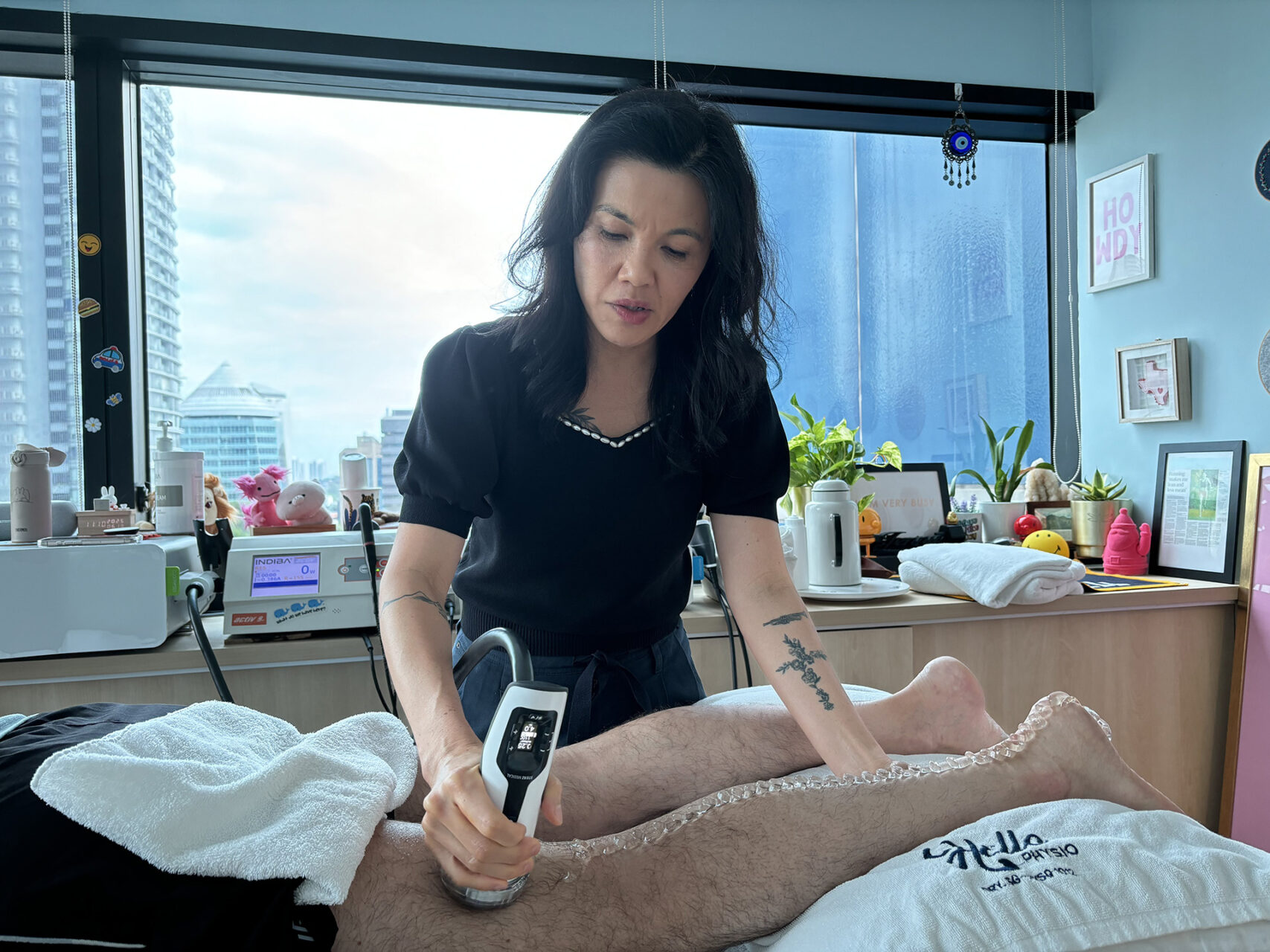
How Physiotherapy Prevents Repeated Hamstring Injuries
Many are understandably concerned about re-injuring a hamstring. Proper recovery and rehabilitation are key to preventing a re-strained hamstring. Physiotherapists guide recovery and implement targeted strategies to build muscle resilience and optimal movement mechanics. This includes gait analysis and running mechanics training, progressive loading protocols and functional movement screening.
If you’re experiencing a hamstring injury and are looking at how to heal a hamstring injury quickly, contact HelloPhysio today!

